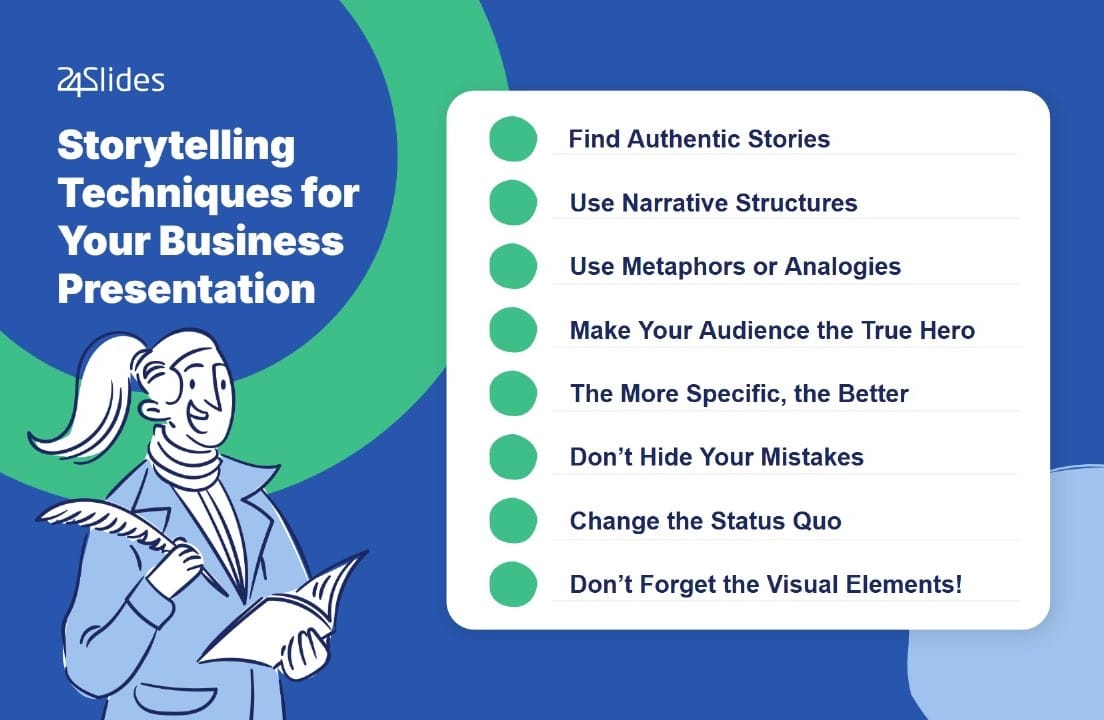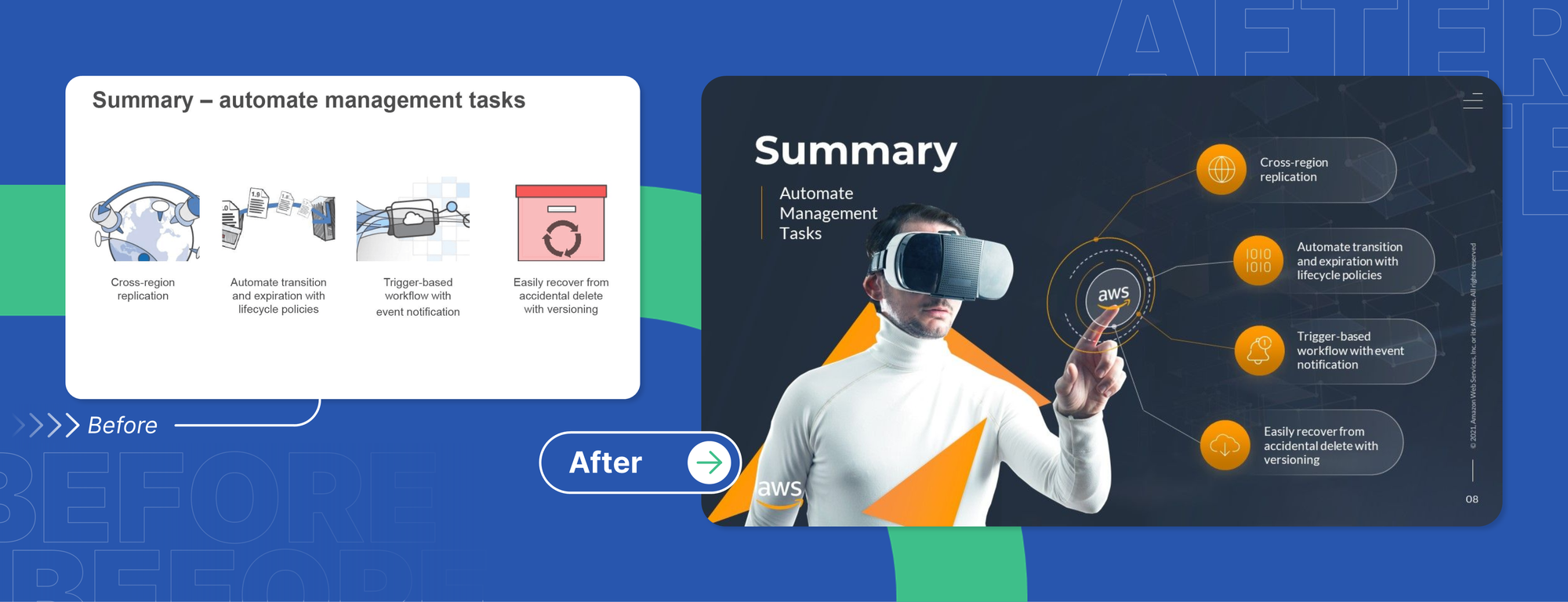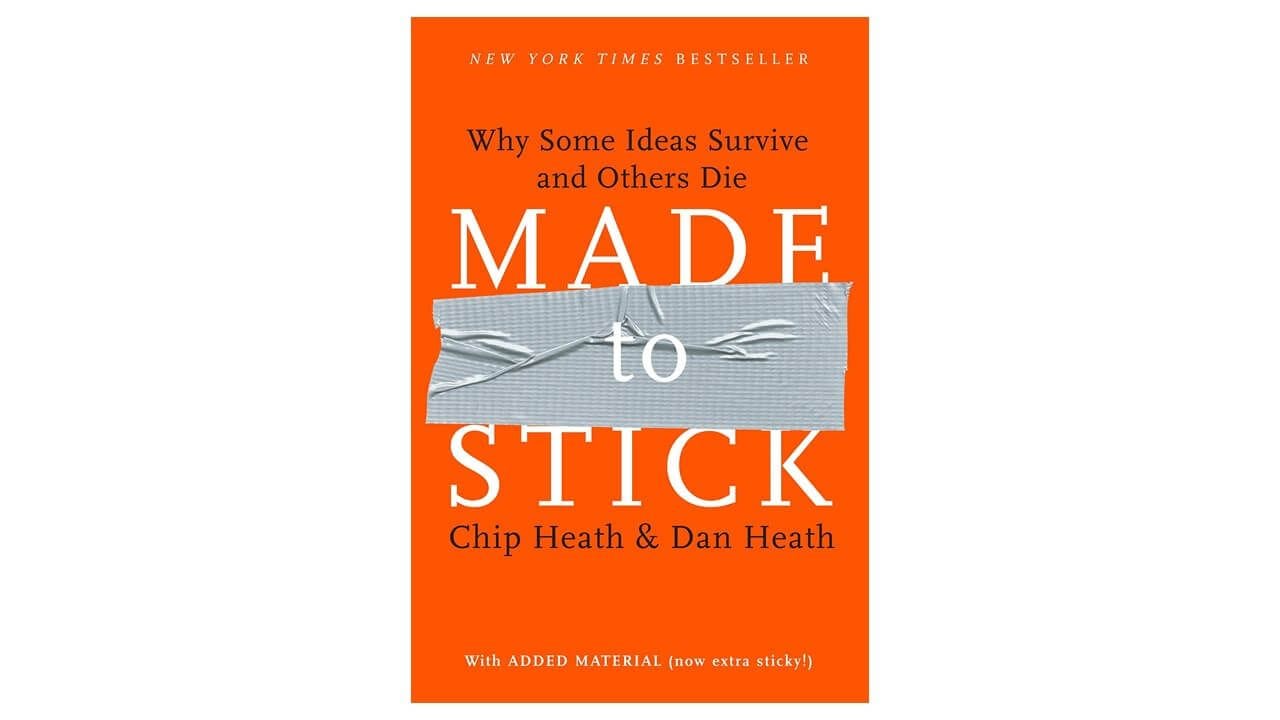The Art of Presenting: 8 Storytelling Techniques You Can't-Miss in Your Business Presentation
You may be familiar with names like Richard Branson, Tim Cook, or Sheryl Sandberg. They are well-known business leaders, and all three appeared on the Time 100 list of the world's most influential people.
But there’s something else they have in common: they all use stories to convey their ideas. Richard Branson once said, “Entrepreneurs who make a difference are, in fact, professional storytellers.” But you don’t have to be a famous entrepreneur or CEO to start sharing compelling stories.
Anyone can benefit from storytelling in business. Whether you want to present a project, close sales deals, or get your team excited about one of your ideas, great stories can get you there.
Fortunately, there are many storytelling techniques for presentations that you can use to engage your audience, change their perspective, and inspire them to take action. Stick with us—we’re just getting started!
What is Business Storytelling and Why is it Important?
Storytelling is essential in any presentation. It is a powerful tool for forging an emotional connection with your audience. In the business world, it can distinguish you from the competition and help cultivate a more loyal and engaged community.
For Lani Peterson, psychologist, and executive coach, storytelling is an art that can attract, influence, and inspire your audience. In her words:
“Just think about all those scary stories told around the campfire. Your heart rate increases, you get goosebumps, and the hair on the back of your neck stands on end. The stories told in a business setting might not be quite as dramatic (or hair-raising), but nevertheless, they can be more impactful than data alone.”
Regardless of the type of presentation—sales, quarterly reports, business plans, data findings, or proposals—all seek to influence a final decision from your stakeholders. This is where the power of storytelling for business comes in.
While data appeals to logic, well-crafted stories appeal to emotions, fostering empathy and allowing your audience to relate to the problems you present. From a neurobiological standpoint, stories increase oxytocin levels, a chemical associated with relaxation and trust.
So, if you ask what difference storytelling can make in your presentations, the answer is simple. When you use stories, you build a stronger connection with your audience, making it easier for them to understand and support your ideas.

8 Storytelling Techniques for Your Business Presentations
Now that we’ve covered the key concepts, let’s look at how to incorporate storytelling in your business presentations.
Here are eight techniques that will help you craft better stories, create engaging presentations, and boost the impact of your ideas.

Storytelling Technique #1: Find Authentic Stories
In a world of fake news, people crave what’s real. That’s why authentic stories stand out and have a higher chance of being memorable to your audience.
Fortunately, everything you do has a story behind it. You just have to be perceptive enough to catch them. And believe me, it’s easier to use an existing story than to invent one.
For example, at 24Slides, our sales team tends to show clients the WHY behind the business and WHO the people behind it are. Contrary to what others might think, the story of 24Slides' purpose gets positive reactions from our clients and even increases their interest in learning more about the company.
Now, where can you find your business stories? Here are a few ideas:
- The story of your company’s origins
- Challenges you've overcome with your team
- Customer reviews
- Employee success stories
- The social or environmental impact you're making
Storytelling Technique #2: Use Narrative Structures
Have you ever told a joke and didn’t get the explosive reaction you expected? Yes, we’ve all been there. It’s not enough to identify WHAT you want to tell, but also HOW you’re going to tell it.
Luckily, you don’t have to reinvent the wheel. Let me show you three narrative structures, also called ‘storytelling frameworks,’ that you can apply to your stories right now:
1. The Hero’s Journey
Every writing class teaches you this framework. The Hero's Journey (or monomyth) begins with the protagonist (hero) leaving their home and embarking on an adventure.
In summary, it's a transformation story that you can divide into three stages:
- Departure: This is where a transition occurs from the ordinary world to the unknown. The hero receives a disruption in their daily life that serves as a challenge.
- Initiation: Obstacles appear, lessons are learned, and the hero starts to change. In this stage, the hero usually obtains a magical object or special power.
- Return: The big challenge is faced, and the hero wins through their transformation. In the end, the hero returns with a reward to their familiar world.
Some successful examples of this narrative structure are The Lion King, Star Wars, and Mulan.
2. The Story Mountain
This storytelling framework is perfect for building tension.
Let’s break down its structure:
- Beginning: The context is set, characters are introduced, and the foundation of the story is laid.
- Conflict: The problem or challenge arises, disrupting the normal and generating tension in the narrative.
- Climax: The highest point of tension and confrontation is reached, with a decisive plot twist.
- Deflation: The process of relieving tension begins, showing how the problems in the story start to be solved.
- Resolution: The conflicts are closed, and the story concludes, tying up all loose ends.
For a shorter version, you can also use the 3-act structure: Setup, Confrontation, and Resolution. Consider which version best allows your story to engage your audience and support the message of your business presentation.
3. In-Medias Res
If you want to grab your audience’s attention from the get-go, this storytelling framework is for you.
The In-Medias Res narrative technique (Latin for "in the middle of things") is used for stories that start in the heat of the action.
Here’s how it works:
- Climax: The story starts in the midst of action, near the end, or at a point of high tension. This stage creates intrigue in the audience as they want to understand why the characters are in that situation.
- Context: After the impactful start, the story backtracks to the past to explain how the initial climax was reached. Flashbacks are often used to avoid interrupting the initial momentum.
- Conflict Resolution: At the end, the story reaches a conclusion where the conflicts presented earlier are resolved.
Want a practical example? Watch 12 Years a Slave, Pulp Fiction, or The Greatest Showman. These films begin In-medias Res, and they’ll surely inspire you to try something new!
Storytelling Technique #3: Use Metaphors or Analogies
Metaphors and analogies are powerful storytelling tools for simplifying complex concepts. By transforming technical ideas into more relatable comparisons, you make it easier for your audience to understand and remember your message.
Are you looking for some metaphor and analogy ideas from the corporate world? Here are a few:
- "Our product X is the backbone of our strategy."
- "The company culture is the DNA of the business."
- "Project Managers are the architects of our service."
- "Business growth is like scaling a mountain."
- "Customer feedback is the thermometer of the company."
The trick with this technique is to be creative but simple. That way, your message will be much more memorable.
Storytelling Technique #4: Make Your Audience the True Hero
One might think that the hero of the story is the company or product, but in reality, it’s the audience. Instead of saying, “This is what my product does,” try saying, “This is what you can do with my product/idea/solution.”
When you ignore your customers' true needs and signals, you lose valuable opportunities. By recognizing and leveraging these insights, you can uncover that consumers are seeking more practical and personalized solutions.
If you truly want people to adopt your ideas as their own, they need to see themselves reflected in your story. Always.
Storytelling Technique #5: The More Specific, the Better
At this point, it’s clear that the essence of storytelling is to touch the emotional core of your audience. One thing that helps create emotionally charged stories is adding details.
You should present characters, settings, and situations that are easy to relate to. This information will help your audience vividly imagine what you're describing, increasing your chances of staying at the top of their mind.
If your business presentation focuses more on the technical side, be sure to include relevant figures and numbers. There are several ways to present data on your slides.
Storytelling Technique #6: Don’t Hide Your Mistakes
When working on your business stories, it’s very common to avoid mentioning the things that went wrong. But this is the opposite of what you should do. Mistakes, failures, and struggles are what make your story exciting and more human.
Would you prefer to hear a story where everything goes smoothly and everyone lives happily ever after, or a story with challenges, ups and downs, and life lessons?
Next time you’re considering leaving out the difficulties your team faced during a summer sale, for example, think twice. It could lead to a unique story that makes your business presentation stand out.
Storytelling Technique #7: Change the Status Quo
Nancy Duarte, a communication expert, studied persuasive presentations and identified a structure she called “Sparkline,” which involves moving your audience between two scenarios: “What is” and “What could be.”
This approach allows you to show the value of your idea with more impact. The concept of “What is” addresses the problem you're trying to solve or the current situation, while “What could be” is the ideal situation your solution proposes.
"Sparkline" is an excellent method for challenging the status quo in your audience’s mind and opening a window for your ideas to be adopted. Don't hesitate to apply it in your next business presentation.
Storytelling Technique #8: Don’t Forget the Visual Elements!
We’ve already covered a few points about your story, but what about the design of your presentation? In business, every communication resource sends a message, even indirectly.
Therefore, your PowerPoint slides should not only match your vibrant story but also enhance its effect on your audience. Here’s a quick list of things to keep in mind when working on your PowerPoint presentations:
- Use images to immerse your audience in the world of your story.
- Your visuals should support the key points of your story. Place them strategically.
- Use your slides to highlight only a few powerful phrases or words from your speech. Ensure they relate to your core message.
- Keep a consistent typography style throughout the presentation.
- Colors communicate, too! Ensure your color combination conveys the right perceptions about your topic and your characters.
Don't you think presentation design can support your goals? Check out these before and after examples from our team at 24Slides:


Storytelling can do its part, but a branded presentation is the perfect complement to maximize your impact.
Extra Resources to Improve Your Presentation Storytelling
If you want more inspiration to create amazing storytelling, consider these resources:
Book Recommendation: Made to Stick by Chip and Dan Heath
Ever spent hours preparing a presentation, only to have people look bored and distracted when you delivered it? I don’t blame you—it’s happened to the best of us! This is because you're not making your idea interesting enough for people to pay attention.
In Made to Stick, you’ll learn to use the five elements of the SUCCES framework to make your messages interesting, actionable, and memorable.
This is a must-read for anyone who has something to share and wants their ideas to be unforgettable.

TEDx Talk: Why Storytelling is More Trustworthy Than Presenting Data by Karen Eber
If you have trouble implementing storytelling into your sales reports and quarterly reviews, this video is for you.
Leadership consultant Karen Eber points out that storytelling and data don't have to be two opposing things. It's the combination of both that makes people care and open their eyes to the problem you’re trying to solve.
Eber also masterfully demonstrates the link between storytelling and neurology, making this a must-watch for any presenter!
Professional Presentation Designers
Who said the person delivering the presentation also needs to design it? Outsourcing tasks that are slowing you down is a great way to enhance your storytelling skills.
According to our latest survey, average executives spend about 5 hours a week working on their PowerPoint slides. That's about 20 hours a month that you could be using to gather the right numbers, create better messages, or rehearse your high-impact speech.
Our PowerPoint designers at 24Slides can help you work smarter by taking care of the visual aspect of your slides, allowing you to focus on what matters most—perfecting your presentation storytelling techniques.

Like everything else, the only way to master these storytelling techniques is through practice. We're confident that it will become your secret weapon for delivering successful business presentations!
If you like this content, you’d also like:




